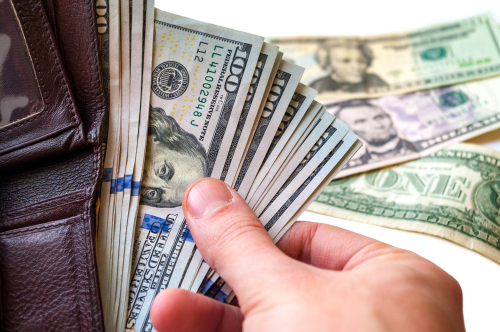Dollar stumbles as Fed stands pat on three rate hikes for 2018
NEW YORK (Reuters) – The dollar recorded its largest one-day loss in two months against a basket of currencies on Wednesday as Federal Reserve officials stuck to their view of three rate increases for 2018 as they want to see a further pickup in inflation.
The U.S. central bank as expected delivered a quarter point rate hike to lift its target range on key borrowing costs to 1.50-1.75 percent. However, it disappointed currency traders who had bet it was prepared to raise rates perhaps four times this year as the jobs market approaches full employment.
“It looks like a bit of a letdown even though the Fed’s overall outlook is hawkish because their economic outlook has strengthened. That’s why we are seeing a bit of a disappointment on the dollar side,” said Minh Trang, senior foreign currency trader at Silicon Valley Bank in Santa Clara, California.
Jerome Powell, in his first news conference as Fed chief, said he has not seen evidence of an acceleration in wage growth amid tightening labour conditions.
Interest rates futures implied traders priced in the next rate hike at the Fed’s June 12-13 policy meeting, followed by another rate increase in December, CME Group’s FedWatch program showed.
The dollar index, which tracks the greenback versus a basket of six currencies, fell 0.693 points or 0.77 percent, to 89.678. It booked its steepest one-day drop since Jan. 24 when it fell 1 percent.
The greenback ended down 0.54 percent at 105.95 yen.
The euro rose 0.82 percent for its biggest one-day gain in nearly two months at $1.2340.
The Canadian dollar and Mexican peso initially rose on reports the White House had dropped a demand related to auto exports in the renegotiation of the North American Free Trade Agreement (NAFTA).
The Canadian dollar rose 1.32 percent at C$1.2900 per U.S. dollar. The peso increased 1.89 percent at 18.4110 pesos per U.S. dollar after touching a 6-1/2 week high at 18.4150 pesos.
The Australian dollar rallied 1.15 percent at $0.7765, rebounding from a three-month low of $0.7672 in early trade.
Australia, a big producer of commodities, is among the most vulnerable countries if U.S. President Donald Trump’s protectionist policy spurs a reprisal from commodity consumer China.
Sterling finished up 1.01 percent at $1.4140 after data showed UK wages grew at their fastest pace in more than two years, supporting bets that the Bank of England would raise interest rates as early as May.

